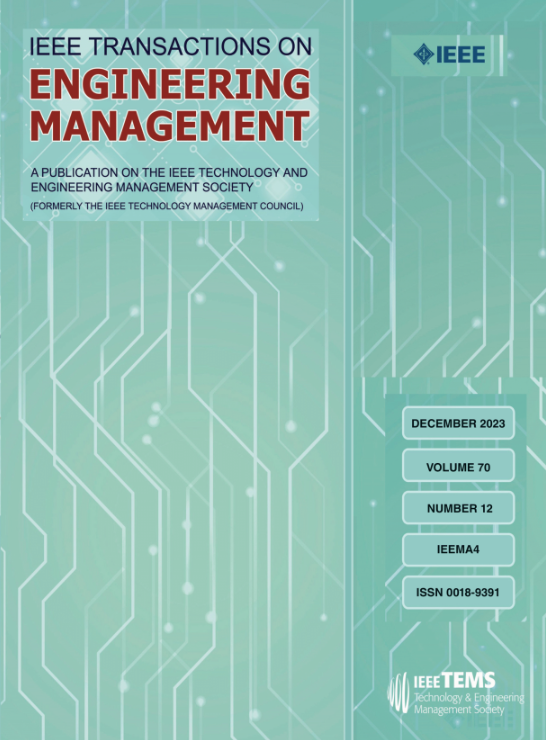Evolution of Collaborative Relationships in Green Building Technology Innovation: A Multidimensional Proximity Perspective
IF 4.6
3区 管理学
Q1 BUSINESS
引用次数: 0
Abstract
High carbon emissions, resource shortage, and environmental degradation are prevalent challenges in the construction sector. Green building technology innovation (GBTI) has been widely developed to achieve sustainability. Interorganizational collaboration facilitates a communication platform for stakeholders, characterized by network. However, few studies have specifically delved into the underpinnings of the evolution of GBTI collaboration networks and how proximity mechanisms underpin GBTI collaboration networks. Drawing on collaborative patents data from the Derwent Innovation Index, we empirically provide valuable insights into GBTI collaboration networks in China's construction industry from a multidimensional proximity perspective. Social network analysis is deployed to construct and depict the spatial-temporal evolution paths of GBTI collaboration networks. Besides, quadratic assignment procedure analysis is utilized to explore the driving factors of GBTI collaboration networks. The results reveal that GBTI collaboration networks become expansive and exhibit small-world properties. Organizational collaboration shows a multicore radiative diffusion trend over temporal hierarchy. There are noticeable spillover effects within regional collaboration, which are closely related to geospatial agglomeration. Besides, the positive impacts of geographical and social proximity strengthen, whereas institutional and organizational proximity gradually diminish. Geographical proximity also acts as a moderator, showing a complementarity with institutional and organizational proximity, and a substitution with social proximity. This study not only enhances our understanding of collaborative innovation management but also gives profound insights into the evolutionary mechanism of collaborative relationships in GBTI. It provides valuable reference and guidance for formulating relevant policies and strategies.绿色建筑技术创新中协同关系的演化:多维接近视角
高碳排放、资源短缺和环境恶化是建筑行业普遍面临的挑战。绿色建筑技术创新(GBTI)在实现可持续发展方面得到了广泛的发展。组织间协作为利益相关者提供了沟通平台,具有网络特征。然而,很少有研究专门深入研究GBTI协作网络演变的基础以及邻近机制如何支撑GBTI协作网络。利用德文特创新指数中的合作专利数据,我们从多维接近角度对中国建筑行业的GBTI合作网络提供了有价值的经验见解。利用社会网络分析来构建和描述GBTI协作网络的时空演化路径。此外,利用二次分配过程分析探讨了GBTI协作网络的驱动因素。结果表明,GBTI协作网络具有扩张性,并表现出小世界特性。组织协作在时间层次上呈现多核辐射扩散趋势。区域合作存在明显的溢出效应,这与地理空间集聚密切相关。地理和社会接近性的正向影响增强,制度和组织接近性的正向影响逐渐减弱。地理邻近也有调节作用,与制度和组织邻近具有互补作用,与社会邻近具有替代作用。本研究不仅增强了我们对协同创新管理的认识,而且对GBTI中协同关系的演化机制提供了深刻的见解。为制定相关政策和战略提供了有价值的参考和指导。
本文章由计算机程序翻译,如有差异,请以英文原文为准。
求助全文
约1分钟内获得全文
求助全文
来源期刊

IEEE Transactions on Engineering Management
管理科学-工程:工业
CiteScore
10.30
自引率
19.00%
发文量
604
审稿时长
5.3 months
期刊介绍:
Management of technical functions such as research, development, and engineering in industry, government, university, and other settings. Emphasis is on studies carried on within an organization to help in decision making or policy formation for RD&E.
 求助内容:
求助内容: 应助结果提醒方式:
应助结果提醒方式:


